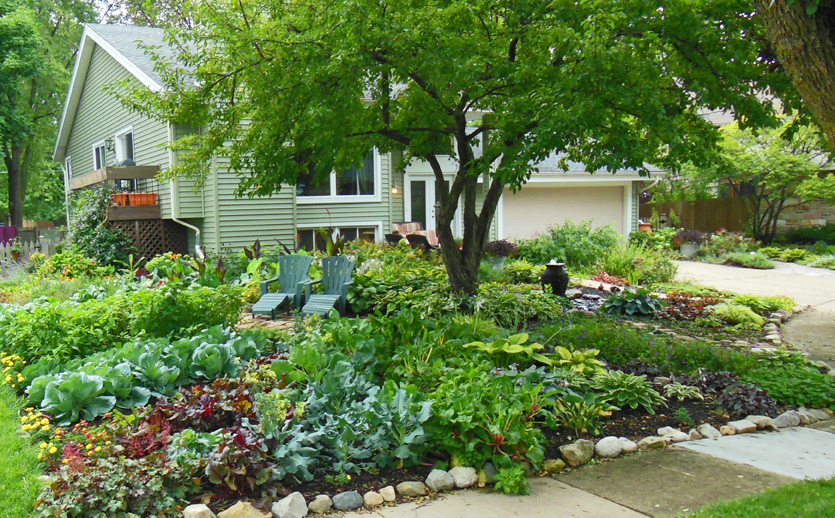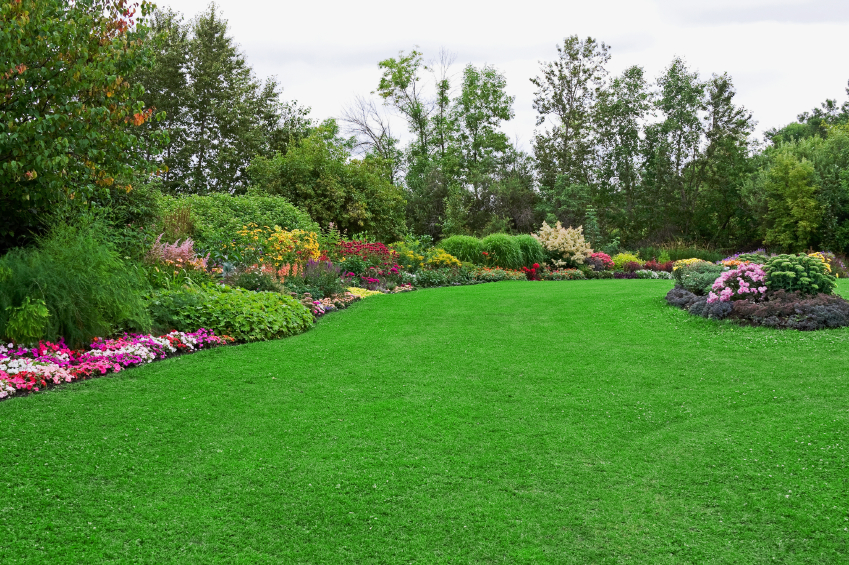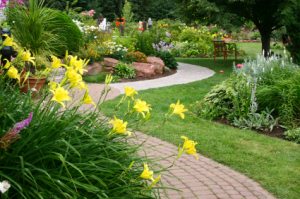
Home Landscaping 101: How to Have a Beautiful, Healthy Yard
Whether you’re about to turn your tedious yard into a fun and comfy little space where you can relax or you just moved into a new house and you’re eager to make your dream of designing your very own landscape finally come true, here is where you can find all the information you need to start from scratch: from detailed planning to choosing the right plants.
Average homeowners spend barely 4 hours a week on landscape work. Unless you have a year-round plan you stick to or hire home landscaping Bolingbrook services to take care of the job, there’s no way this amount of time and care is enough for your landscape to be as beautiful and healthy as you want it. If you’re an average homeowner (hopefully you aren’t), you are probably not aware how can your lawn pay you back for all the extra hard work you do. However, you don’t have to slave over your yard to keep it healthy, functional and visually appealing. The key is to know how, when and what to do. With no further ado, let’s get started with learning how to get and maintain the yard of your dreams.
Consider How You’re Going to Use Your Yard
Before you start planning, the first and most important tip of all is to consider how will you be using your yard. Are you planning to host associates from your company? Playing soccer with your kids? Have family Sunday dinners? Get naps during summer? Your personal and your family preferences should be the crucial factor to dictate the design of your landscape.
Get Familiar with Your Yard and Make an Assessment
Chances are that you’re not a professional landscape designer, however, you still need to get familiar with your yard and make an honest assessment of it. Consider the topography of your site, your regional climate, your soil conditions and sun exposure. Look out for best places for specific decorative items and find the ideal spot for your favorite plants you’re planning to add. Also, if you want a driveway, check if you have enough space and if it will fit the overall style of your landscape.
Choose a Style
Speaking of style, that is another important step towards a beautiful and functional yard. Health-wise, it is not very important, but it can definitely provide motivation to spend an extra hour or two every week on landscape work. The more you find yourself into your landscape, the more you want it to be well maintained. Therefore, choose a style that reflects your personality best. Decide whether formal or informal landscape fits you better and start from there. A formal landscape features strong lines, symmetrical plantings and decorative elements and uniform plants. Informal landscape designs, on the other hand, are completely up to your taste and you can add as many asymmetrical elements, plants and decorative items as you wish.
Consider Who Will be Using Your Yard
Once you’ve decided the purpose of your landscape, made an honest assessment and chosen a style that fits your purpose best, it’s time to consider who will be using your yard. Will children play games in your yard? Do you have any pets who will be digging, running and make all sorts of mess? Will you strictly use your yard for dinners and meetings? But why limit yourself when you can create a tiny little space for everyone! By using strategic plantings and hardscapes, you can separate different spaces in one yard. However, it is important to consider your budget and keep up to your landscape style. The more realistic you are, the better the outcome.
Place Your Plants Correctly
Before you randomly plant anything, you need to determine what types of plants will work in your current landscape and regional conditions (sun exposure, temperature, wind, etc.) and how will they function in your landscape. Plants can indeed be used in many different ways, but since the way you arrange them will define your creative hour, give your best. Find what plants work best for you and give your landscape a fresh, colorful look. Also, keep in mind that you can use plants as barriers to define specific areas within your yard. Get an expert advice from home landscaping Bolingbrook services providers or Google well before you plant a single flower.
Pay Attention to the Smallest Details
As you’re slowly completing the process of building or rearranging your landscape, you may be getting really excited and easily overlook some not-so-tiny mistakes. Of course, you’re probably a landscape beginner (for now), but paying attention to detail can spare you from a plenty of trouble in future. Garden ornaments, fence posts, hardscapes, lawn and plants, they all have their own visual details, such as shapes, forms, colors, textures, length, width, etc. Making sure that all of these visual details complement and contrast each other can result in an amazing landscape. Aside from its visual appearance, consider all the scents of the plants you choose, because they too can improve the experience in your yard.


